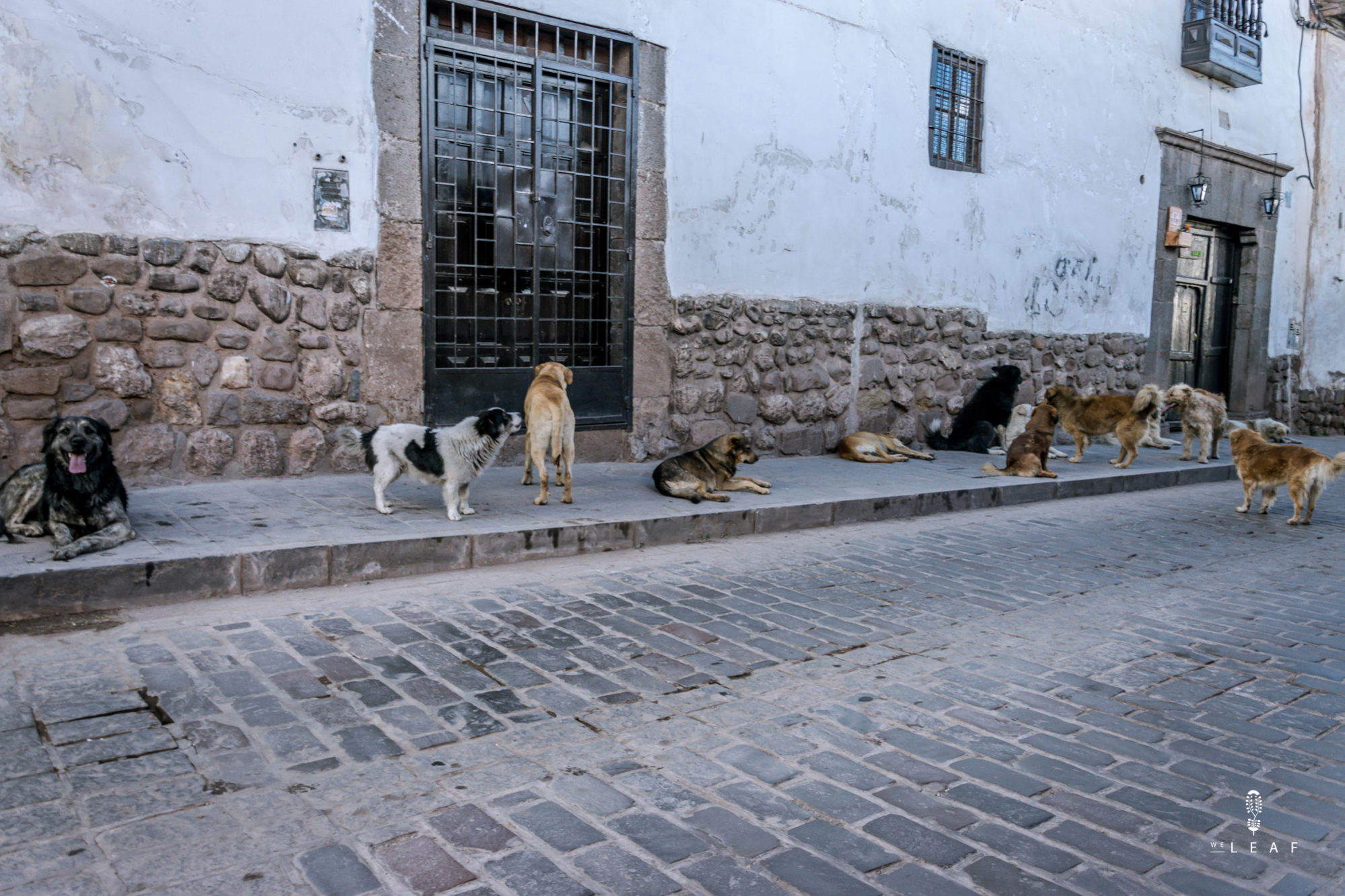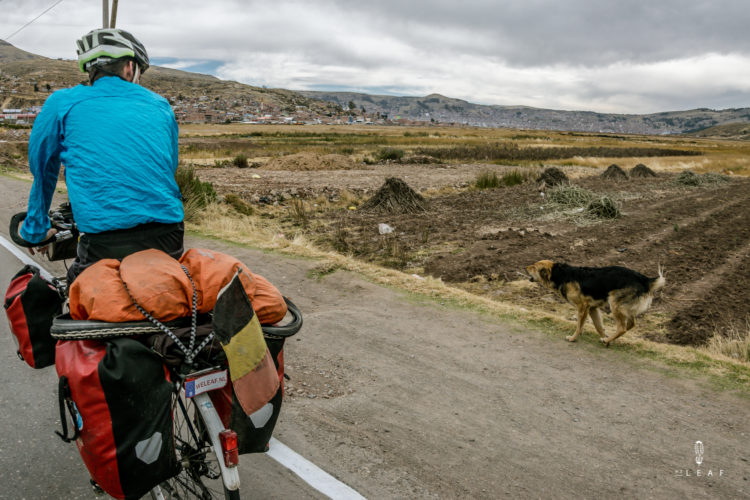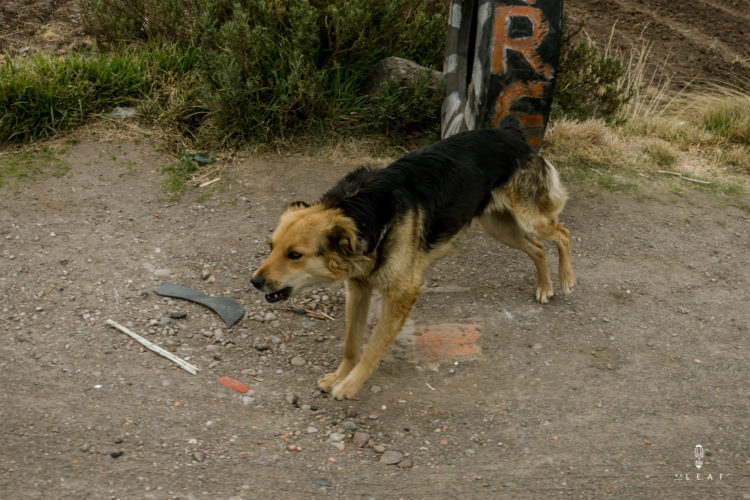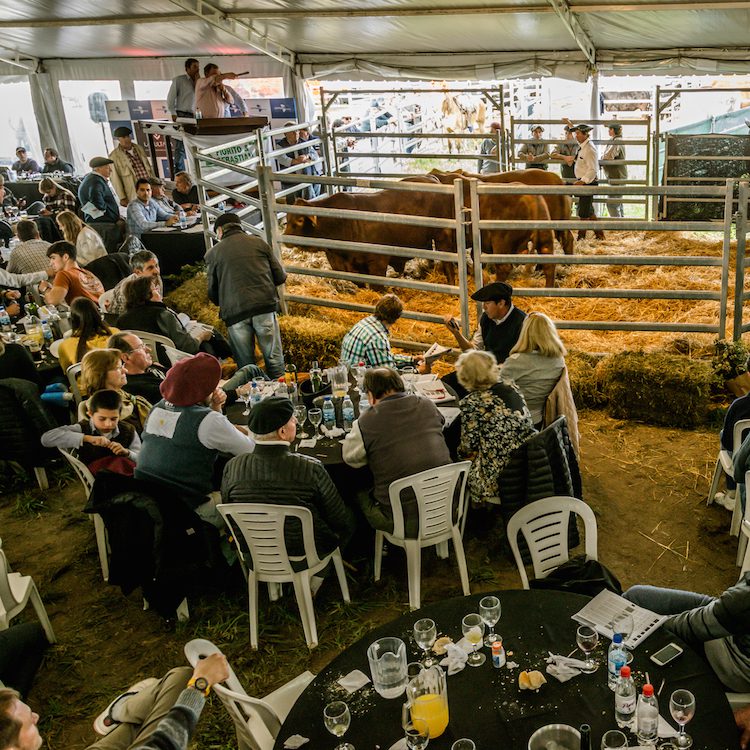
This is how we deal with aggressive dogs
The road to sustainable cities
June 25, 2018
Cycling route Old roads and pilgrim towns
June 28, 2018
The cyclists nightmare
The fear of every cyclist and perhaps the biggest annoyance on the bike: stray dogs. On the other hand, all those dogs might have a bloodshed on cyclists, because why would they start barking like mad and attack us? Those spinning legs and wheels work like a red rag on a bull, not a single dog that can resist it. In Europe we do not have that much trouble with street dogs, but in Asia and South America almost every dog is a stray dog. But what is the ultimate tip against those dogs?
Cycling as hard as you can?
Every cyclist has his own technique. Some cyclists try to cycle away as quickly as possible in the hope that the dog can not follow. But is that a good idea? The average dog reaches a speed of 30 kilometers per hour and can maintain that for twenty kilometers. They even reach 50 kilometers per hour over a shorter distance. So, except for a mud-fat bulldog or chihuahua chasing you, you have little chance of winning it on speed.
Bring a pile of stones?
A whole stock of stones will undoubtedly help to keep a dog at a distance. But who wants to carry all that weight, and where do you put the stones within reach to act quickly when a dog attacks you? In South America we were attacked several times by three dogs at the same time. You will have to aim pretty well to get them all out of the field. Save the extra weight and opt for a different technique.
Like going wild?
Another option is to shout loudly, wave your arms and try to kick the dog away. It will certainly help to keep away a few dogs who will look stunned at the wild man on the bike. But most dogs will probably only get wilder from those waving legs and arms. You can count on a tear in your pants and a lot of scary moments. As far as we are concerned, this is certainly not the recommended method. But what is the ultimate tip?


Don't be the prey, be the hunter!
Predators such as wild cats and wolves hunt for their prey. They exhaust the prey over a long distance and usually opt for small or weaker animals. The attack will almost always happen from behind. A running animal is the prey for a predator. And then we cycle along a quiet farm as suddenly that big dog rushes out of the gate. Our natural reaction is running away and with that we become the prey. The dog sees us as a danger that he must chase away and he will chase us and try to bite your legs, or in your bicycle bag if you are lucky.
Here comes our golden tip: Slow down and make yourself big! When you are stationary, you suddenly are big and strong compared to the dog. There are no moving legs and rotating wheels that make the dog crazy, but there is a big object opposite him. You are the boss, the hunter! We have been attacked hundreds of times by dogs on our world trip. And every time our technique works excellently. Stopping completely is often not necessary. Slowing down and making yourself big is enough to master the dog. They bark again one more time or growl disappointed, but then drip to their place. Show who is the boss and you will never suffer from those annoying, but sweet, dogs!
What if you are bitten?
Sometimes even the best trick doesn't works or you just have bad luck. Despite the fact that our own technique always works, we were both bitten by a dog. With Olivier it happened in a bizarre way when we asked for water at a house next to the road. When Olivier handed the water bottle to the woman, the dog jumped from behind the woman and grasped Olivier's wrist. We had never seen that before! Zoë wasn't paying attention when a dog rushed in from the left and bit her calf. In both cases it was a strong bite and some blood could be seen. In such a case you have to go to a hospital for a rabies shot as soon as possible. We have been vaccinated against rabies, but that does not mean that you no longer have to go to the hospital. The rabies vaccination only gives you a little more time, but you still have to get one or two extra injections, depending on the policy in the country. In our case this happened in Peru where the vaccinations are free, as well as the waiting times in the hospitals.
We travel with the Globetrotter Insurance from Allianz Global Assistance and had immediate contact with the emergency center. That gave us a lot of trust because in the hospitals in Peru they always said something different. Because the vaccinations are free in Peru, there was no reimbursement, but in other countries that hospital visit can cost a lot without travel insurance.






3 Comments
[…] This is how we deal with aggressive dogs […]
[…] This is how we deal with aggressive dogs […]
“In such a case you have to go to a hospital for a rabies shot as soon as possible. We have been vaccinated against rabies, but that does not mean that you no longer have to go to the hospital. The rabies vaccination only gives you a little more time, but you still have to get one or two extra injections, depending on the policy in the country. In our case this happened in Peru where the vaccinations are free, as well as the waiting times in the hospitals.”
I do not agree with this understanding. An injection against rabies is only needed when your bite is infected with rabies. If this happens (i.e. you will become feverish), then you will generally have enough time to go to the hospital and ask for a shot.
This I learned after I was biten by a dog in Colombia, where they would not give me the shot out of economical considerations (i.e. the shot is scarce and they only wanted to give it when really necessary). Something similar I experienced after receiving 5 stitches from a machete woundcut in Brazil. There, they did not want to give me a Tetanus injection.
My conclusion is that we were all programmed with a western-world, pharma-science, insurance-paid understanding, which is not necessarily how the world, nature and foreign doctors work…
I thought your awesome website could gain from this possibly mind-altering understanding.